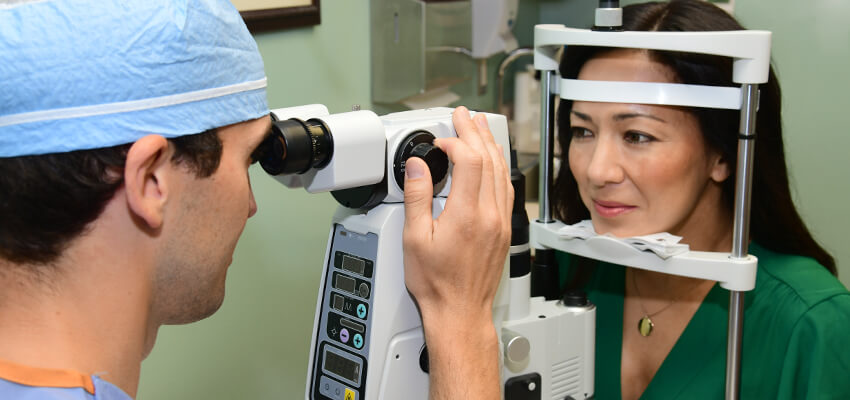
Endothelial Keratoplasty is abroad term for a partial thickness cornea transplant. The two most common types are Descemet’s Membrane Endothelial Keratoplasty (DMEK) and Descemet’s Stripping Endothelial Keratoplasty (DSEK). These surgeries are indicated for patients who have diseases affecting the corneal endothelium leading to corneal edema and poor vision. The most common diseases treated are Fuchs Corneal Dystrophy and Bullous Keratopathy, which is a persistent corneal edema that typically occurs after cataract or glaucoma surgeries.
Because the endothelial cells cannot regenerate themselves, treatment for some corneal conditions require a partial thickness corneal transplant. This is an alternative to a full corneal transplant (called a Penetrating Keratoplasty, or PKP), which was the previous treatment for corneal edema. DMEK and DSEK have a shorter recovery time and less chance of rejection. The endothelium layer is replaced, but the other layers of the cornea are left untouched. These procedures take less time to complete, have less risk, and have shorter recovery times and better vision than full thickness cornea transplant.
Tissue for the transplant comes from an eye bank which is rigorously screened and tested to ensure optimal quality and that no diseases are present in the tissue. After surgery, recovery ranges from two to eight weeks depending on the health of your cornea.
The Procedure
With a DMEK procedure, the abnormal inner lining of the cornea is removed. Then, the surgeon uses a thin, circular disc taken from the donor cornea, which is inserted through the incision. An air bubble holds the donor tissue in place until it heals. Usually only one suture is required.
The advantage of this is that there is no damage to the other layers of the cornea, which means faster recovery and better vision after surgery.
DMEK is an outpatient procedure that typically takes about 45 minutes. Your physician will ask you to lie on your back as much as possible during the first 24 hours to help hold the air bubble and graft in position. Prescription eye drops will be used for comfort and to control infection.
With any procedure that uses donor tissue, there is a risk of rejection, but with DMEK the risk is less than 1%. Most patients notice improvement in their vision within 10-14 days with most of the healing done in the first month, but vision improvement can continue for four to six months.
The cornea specialists at Drs. Campbell, Cunningham, Taylor & Haun thoroughly evaluate each patient and recommend a carefully planned treatment regimen customized to each. Our offices in Knoxville, Farragut, Fountain City, Hardin Valley, Maryville, Oak Ridge, and Sevierville are ready to help.
For an appointment, call (865) 584-0905.



 >
>
Get Social